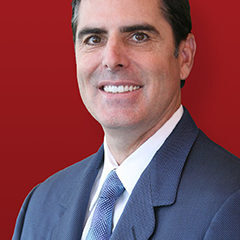
When many properties think of a rebrand, they jump to thoughts of their logo, colors, and perhaps their messaging. They tend to focus on the outcome of the creative process, as it is visual and tangible. However, a brand is not just a logo and a tagline, it is the fusion of complex human perceptions formed over time. A brand isn’t something that should be reinvented every few years, but rather sustained and supported by creative campaigns that keep the image fresh while reinforcing the brand positioning among the audiences served. From messaging to delivering on guest experience, properties can influence brand perception, but they do not control or own their brand, their guests do.
While creative development is an important part of a rebranding process, it is not the starting point. The first decision is “When?” When is the right time for a rebrand? Has the property’s messaging become stale? Is the look of the creative dated? Has anything changed on-property, new hotel or venue? What outside factors in the market necessitate an update? Are there any major changes in the competitive climate? What is the value of a rebrand in terms of potential revenue increase? These are some of the pointed identifiers that guide when it’s the right time to embark on the branding process.
Once a property has determined that a rebrand is required, the first step is gathering data and doing research to determine what elements of a rebrand are needed. Beginning with an analytical approach allows the property to identify which brand modifiers resonate with their guests, the general market, their employees, property management, and in the case of tribal gaming, the tribe itself. Research such as Catalyst’s CATapultTM process allows properties to identify key insights where there is continuity or disconnect between these groups, leading to a 360-degree view of the perception of the property’s brand. Understanding how your property is viewed will dictate what areas need addressing.
Rebranding can consist of an update to messaging or a complete overhaul of messaging, creative, and in-house training. It’s imperative that the ability to deliver an experience matches the message. Ensuring that team members understand their role and how it applies to the property’s brand and messaging can be critical to a successful branding exercise. Communication plans for rebrands should address both internal messaging, as well as the customer-facing interaction. Rebranding is called a process because it is just that.
A step-by-step path that identifies where player perception can be modified or enhanced to have a positive impact on brand awareness and loyalty.
- Identify the need for a rebrand
- Conduct the appropriate research
- Determine the depth and breadth of the rebrand
- Develop brand positioning and messaging
- Develop a campaign, creative, and a communication platform that will resonate with guests, employees, vendors, and the local community
Rebranding done correctly can be a significant investment in resources. Not just the time and effort in the process, but the financial commitment to developing a brand plan and standards, then extending the brand throughout the property and community. Changing property collateral alone can sometimes turn into a capital investment, so being mindful of the complete investment in research, messaging, collateral and training is a must.
Plan, research, budget, trust the process, and build a brand to believe in!







